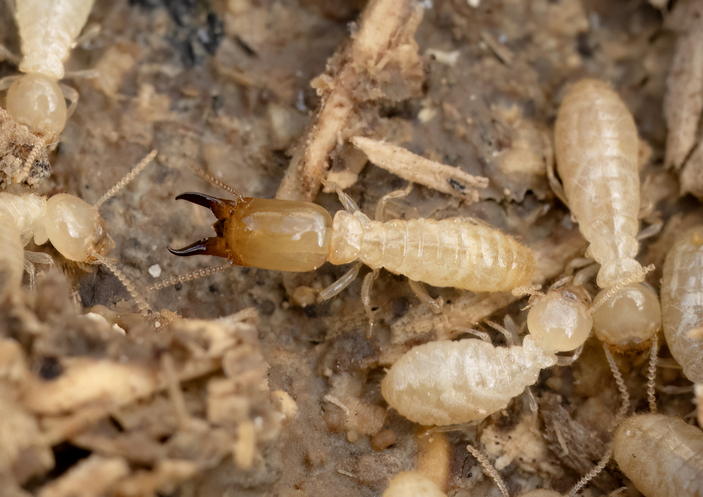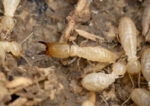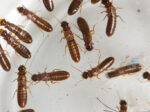
Termite Detective: Subterranean Termites
South Florida is home to some of the most destructive termites in the country, with multiple cities ranking in the top 10 for the worst termite infestations in the nation. Among the most notorious are subterranean termites, which include invasive subterranean termites like the Formosan termite and the Asian subterranean termite (Coptotermes), as well as native subterranean termites (Reticulitermes). These types of termites live underground, invading homes through the soil and causing significant structural damage.
If left untreated, a single infestation can lead to costly repairs that homeowner’s insurance typically does not cover. That’s why understanding subterranean termite signs, knowing how to prevent infestations, and seeking professional termite extermination are crucial for protecting your home.
What Are Subterranean Termites?
The Life Cycle and Behavior of Subterranean Termites
Unlike drywood termites, which live inside the wood they infest, subterranean termites establish colonies in the soil. They tunnel through the ground, creating mud tubes to access food sources like wood framing, flooring, doors, and even window frames.
Once inside, they can remain hidden for years, silently feeding on the structural wood in walls, crawl spaces, and attics. Because they require moisture to survive, they often establish a “home base” in nearby trees, such as oak, pine, mango, or palm trees. These colonies can span the size of a football field, with multiple colonies existing in a single residential area.
Signs of Subterranean Termites Damage
Early detection is key to preventing extensive damage. Some common subterranean termite signs include:
- Mud tubes along the foundation, walls, or inside crawl spaces.
- Hollow-sounding wood that breaks or crumbles easily.
- Warped door frames or buckling wood flooring due to moisture buildup.
- Subterranean termites with wings, especially near windows or light fixtures after a swarm
- Tiny holes in drywall or wood where termites have tunneled through.
Subterranean Termites vs. Drywood Termites
Key Differences Between Subterranean and Drywood Termites
There are many types of termites in Florida, but the two most confused are subterranean termites and drywood termites. While both belong to the suborder Isoptera, they fall into different families:
- Subterranean termites (Family: Rhinotermitidae) – Live in the soil, travel through mud tubes, and require moisture. They attack homes from the ground up.
- Drywood termites (Family: Kalotermitidae) – Do not require soil contact. They infest dry, seasoned wood, including furniture and wooden beams, entering homes through airborne swarms.
Because of these differences, the treatment approach is entirely different. Drywood termites are typically treated with tent fumigation or drill-and-fill methods, while subterranean termite treatment focuses on the soil to eliminate the entire colony.
How to Get Rid of Subterranean Termites
Treatment for Subterranean Termites
Since subterranean termites originate in the soil, any effective treatment must target the colony at its source. There are two primary treatments for subterranean termites:
The Sentricon baiting system is strategically placed around your property. Worker termites feed on the bait and transfer it through the colony via trophallaxis (a feeding and grooming process), eliminating the entire colony. This method ensures that termites are wiped out from both the home and the surrounding property.
Another treatment option is to apply liquid termiticide around the home’s foundation, creating a barrier for killing subterranean termites on contact and preventing new infestations.
Because subterranean termite colonies can be massive, eliminating just the termites inside your home isn’t enough, and you must also target those still underground to prevent reinfestation. Without professional intervention, these termites will return.
Just Call Hulett for Comprehensive Termite Solutions!
With South Florida’s high risk for termite infestations, an annual termite inspection by a professional is essential. The University of Florida and the Department of Agriculture both recommend regular inspections to catch termite problems before they become severe.
Don’t wait for costly termite damage. Schedule your free termite inspection with Hulett Environmental Services today!



